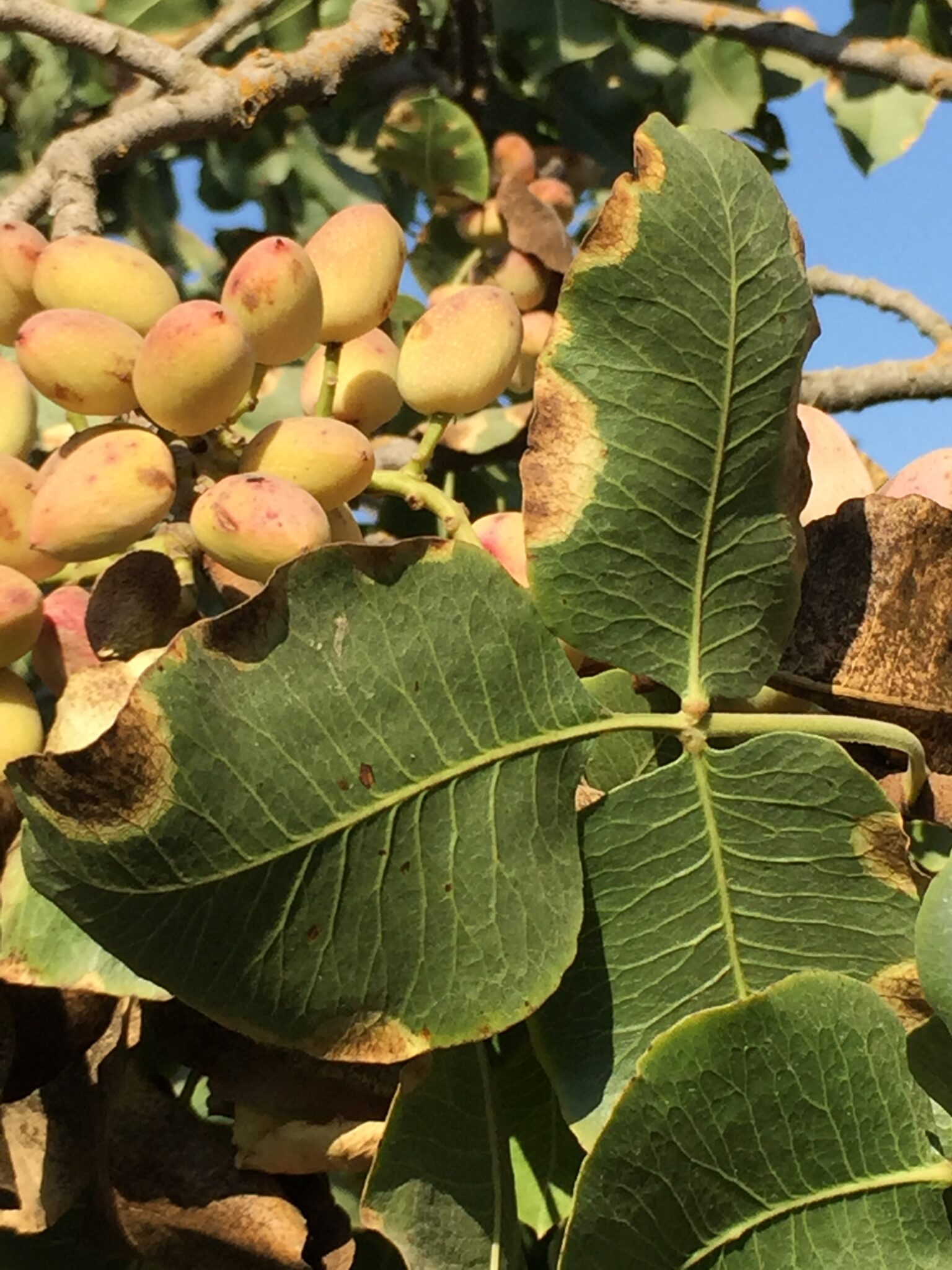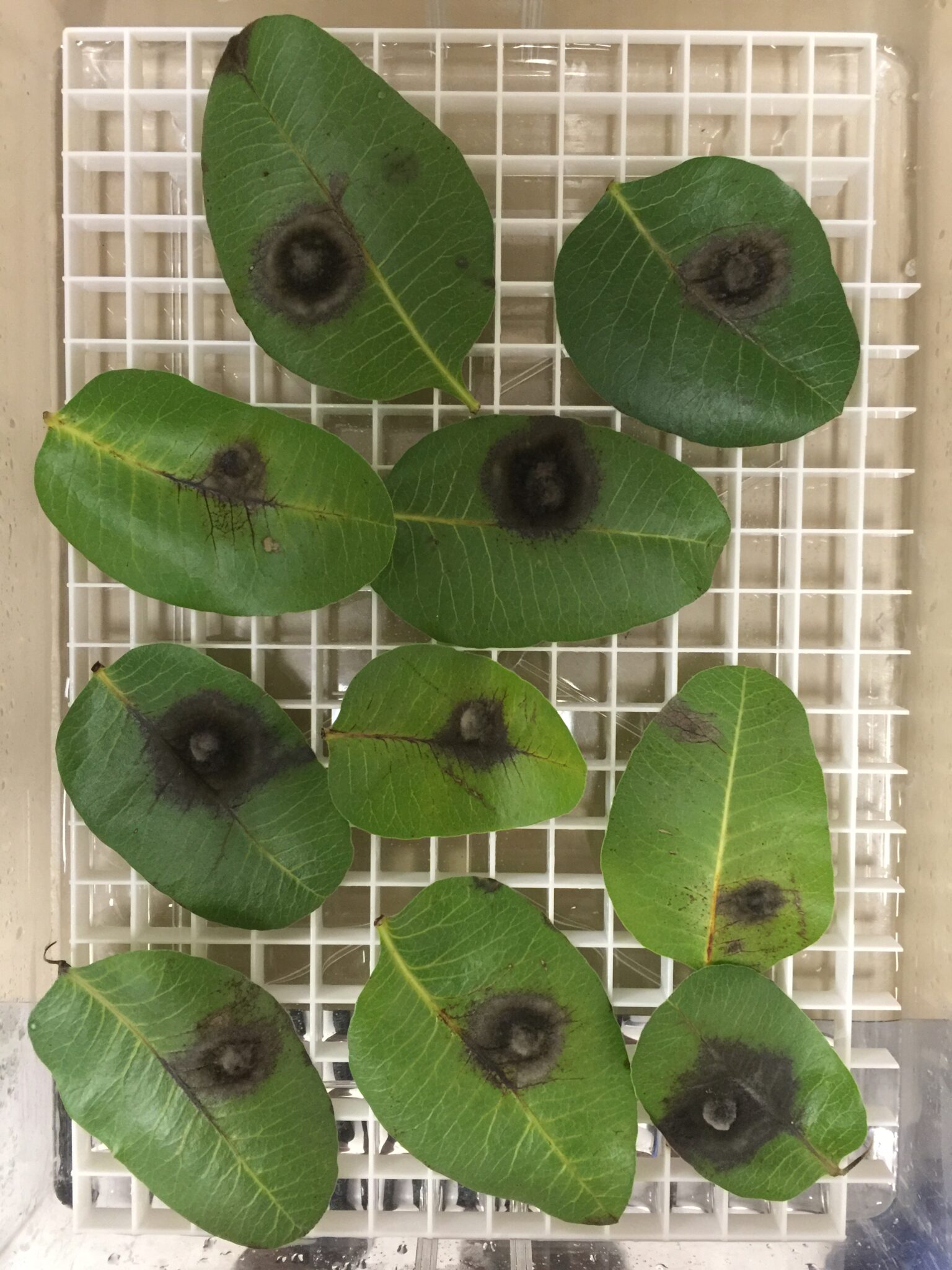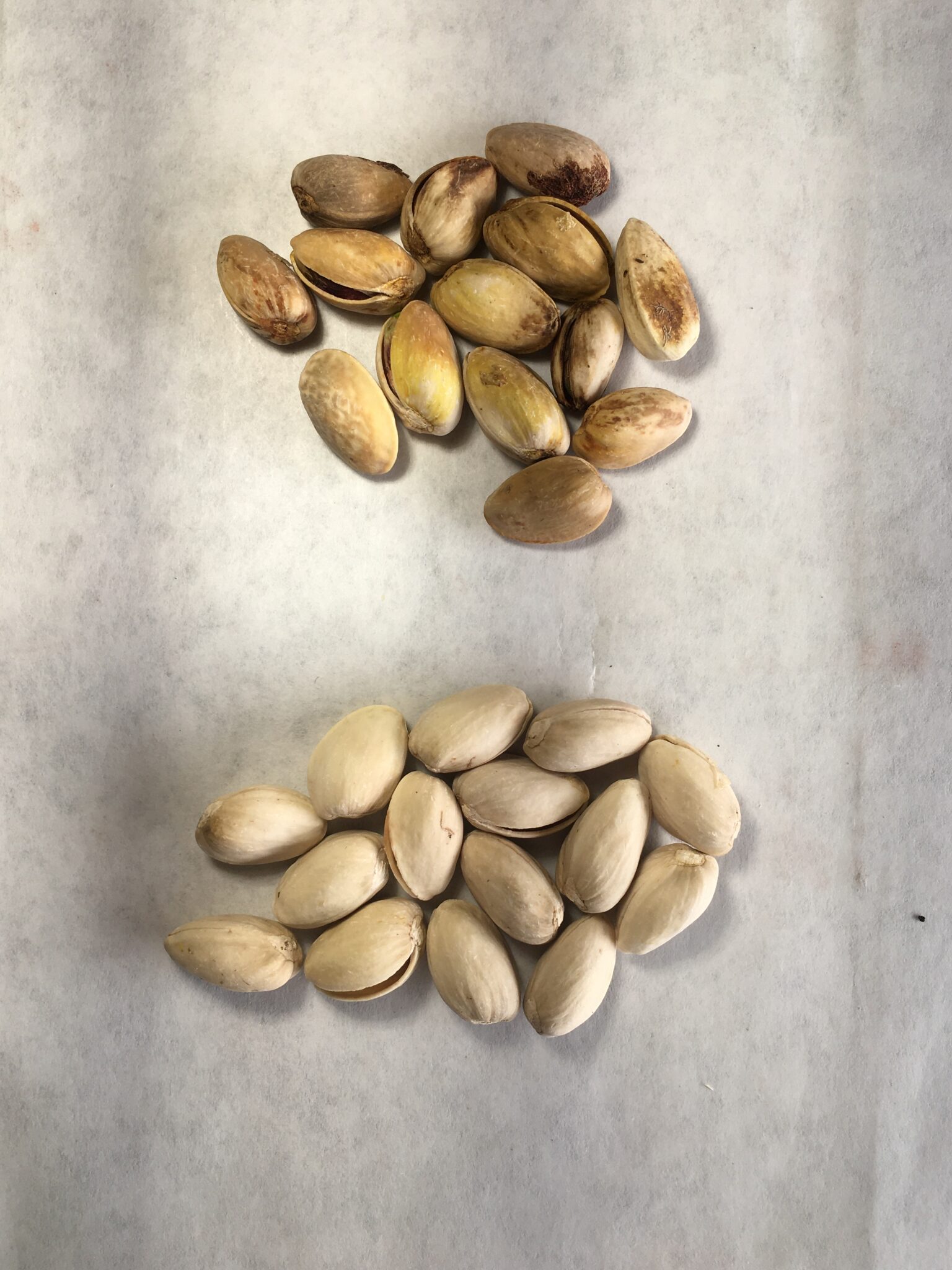
Plant pathologists say the number of calls has increased as well as the level of concern, as a combination of factors have combined to put late blight on the front burner for many pistachio growers going into the 2021 season.
“We are getting a lot of calls lately about this problem, more so in the last couple of years,” said UC Davis plant pathologist Themis Michailides, who is based at the Kearney Agricultural Research and Extension Center in Parlier. “It is a big issue in some areas where they are prone to the development of the disease, and it is getting more prevalent now because we are getting resistance in the pathogen that causes late blight of pistachio.”
Particularly this past summer, as smoke from wildfires trapped humidity and created an ideal environment for disease development, grower concerns were ratcheted up a notch, Michailides said.
“We saw more diseases develop this summer and had more calls with growers reporting problems with Alternaria in pistachio,” he said.
“I have talked with PCAs and UC farm advisors who say they are frantically receiving some calls for this disease,” said fellow UC Davis plant pathologist Paulo Lichtemberg, who is also based at the Kearney center.
Never top of mind for the pistachio industry, late blight nonetheless has long been an issue and particularly in some areas. According to UC Davis literature, Alternaria late blight first showed up in California pistachios in the late 1990s. By the early 2000s, the California Pistachio Commission, now the California Pistachio Research Board, was supporting research to control the disease, Michailides said.
Fungicidal Resistance
Shortly after its arrival, the disease’s primary pathogen, Alternaria alternata, already was showing fungicidal resistance. According to a 2018 research report written by Lichtemberg, Michailides and other Kearney researchers, just two seasons after carboxamide fungicides were registered in pistachios, in 2003, there were reports of resistance. By 2010, according to the report, more than half of the isolates that were tested showed resistance to the fungicides.
Resistance among isolates in a lab, of course, doesn’t automatically translate to resistance in the field, and carboxamide fungicides continue to provide disease control, UC Davis plant pathologists say. But as growers rely on carboxamide and other SDHI fungicides to control a variety of diseases, including Botryosphaeria, which Lichtemberg counts as by far the biggest disease problem facing pistachio growers, researchers are concerned that the control is breaking down.
“This group of fungicides, the SDHIs, are very important, not only for Alternaria late blight, but also for Botryosphaeria,” Lichtemberg said. “And there are locations where growers have complained because they expected better control [of late blight].”
QoI fungicides, such as pyraclostrobin and azoxystrobin, provide an alternative to the SDHIs and are ranked in the UC Statewide IPM Program Pest Management Guidelines as the most effective and least likely to cause resistance when treating for late blight in pistachios. But, Lichtemberg noted, the fact that the SDHIs and QoIs have different active ingredients has little effect on their ability to slow resistance when used in mixtures or alternated as both classes of fungicides work by inhibiting mitochondrial respiration, just at different sites.
The same genetic mutation that creates resistance in one creates resistance to the other active ingredient, Lichtemberg said.
“These two groups are very sensitive, and they need to be used very carefully,” Lichtemberg said, “mainly because they are used in multiple mixes.”
DMI fungicides offer a viable alternative with a different mode of action, Lichtemberg said, and work fairly well. “But, in field trials, you get better control with the SDHIs,” Lichtemberg said.
“The SDHIs are more effective, but they have a higher risk of failure,” he added.

Disease Symptoms
Alternaria late blight occurs as black angular or circular lesions on leaves of both male and female trees. When pistachio fruit is maturing, the lesions appear with a red halo on hulls, according to the IPM website. Black spores develop in the center of the leaf lesions when humid conditions prevail in orchards. Leaf infections can cause severe premature defoliation and create problems during shaking of trees at harvest.
Multiple lesions on leaves and fruit cause leaf blight and deterioration of hulls, which results in shell staining, according to the report. Excessive growth of the fungus can invade kernels, resulting in kernel decay.
In the 2018 report from Michailides, Lichtemberg and others, it was noted that severe infection can cause losses exceeding $1,000 per acre.
The disease tends to be prevalent under certain environmental conditions, particularly high humidity, according to the UC Davis plant pathologists. Because of that, it tends to be more problematic in some areas than in others. Where it is a problem, growers don’t have the luxury to hold off on sprays until seeing symptoms, they said.
“You cannot wait and watch for this disease,” Michailides said. “If you are in an area where it develops historically year after year, you have to spray. If you see symptoms, it is too late.”
Fungicide treatments typically should begin at the beginning of June, Lichtemberg said, and run through July, with three treatments required in some areas. Where disease pressure is marginal, growers at times can get by with two sprays or even one in some years, Lichtemberg said. Typically, the treatment close to the 4th of July is the most important, Michailides said.
Cultural Practices
Several cultural practices can minimize disease pressure, according to the IPM site, including winter pruning to improve air movement and managing tall, dense weeds on the orchard floor to reduce humidity levels and leaf wetness.
If the disease is serious, adjust the irrigation schedule and add gypsum to minimize standing water from August to harvest, the IPM website recommends. Also, it advises growers to use subsurface irrigation if economic to reduce disease incidence and severity.
The site also notes that growers might want to “weigh disease severity against the impact of deficit irrigation on shell splitting.”
In general, the report states: “Alternaria blight is difficult to control and requires a combination of management approaches.”
As for managing resistance, Lichtemberg said it is important for growers to alternate not only active ingredients, but also modes of action. Rotating between the Group 7 fungicides, which include carboxamide, and the Group 11 fungicides, which include the strobilurins, for example, does little to slow the buildup of resistance.
Also, Michailides cautioned growers from treating for the disease late season. Not only is this ineffective, it can complicate matters as well.
“We tested that approach,” he said, “and found out those sprays are not effective. In fact, they make the disease more aggressive. Once you have the symptoms, you have so much inoculum, it doesn’t prevent infection.”
















